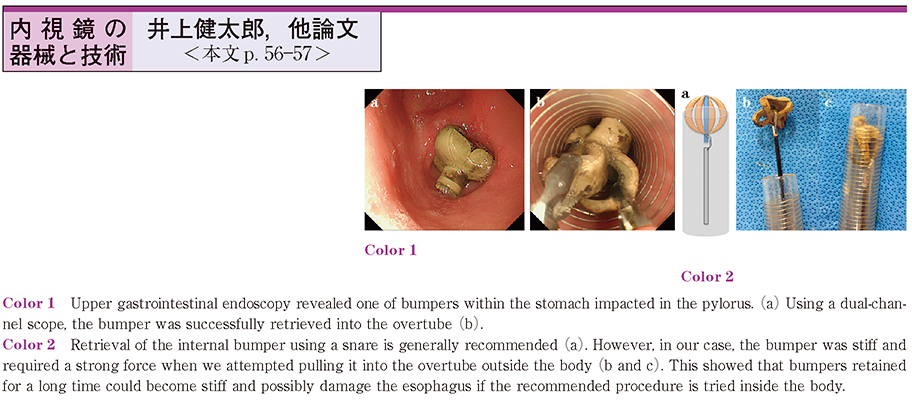Abstract
An 84-year-old nursing home resident who had been on percutaneous endoscopic gastrostomy (PEG) feeding for five years was brought to our emergency room after repetitive vomiting and tachypnea for two days. She was diagnosed as having aspiration pneumonia based on the radiographic findings of opacities in both the lung bases. The chest X-ray also showed two pieces of PEG bumpers in the right upper quadrant of the abdomen. Upper gastrointestinal endoscopy revealed one of the bumpers within the stomach impacted in the pylorus, which was evidently the cause of the repetitive vomiting. It was a 25×25 mm X-shaped bumper, consisting of a central tube (17 mm in length and 6 mm in diameter) with four expandable wings. Attempts to remove the bumper endoscopically with a grasper or a net retriever were unsuccessful due to the resistance at the lower esophageal sphincter. Then, using a dual-channel endoscope, we first grasped and pulled two adjacent wings of the bumper. This action transformed the X-shaped bumper into a Y-shape, allowing it to be easily retrieved into the overtube, 17 mm in size, without causing esophageal injury. Through this case, we recognized the risk and complications of a retained internal bumper, and devised a new method to retrieve it endoscopically.
